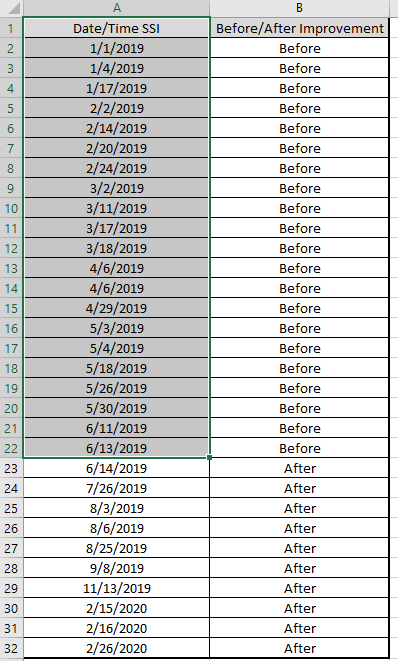
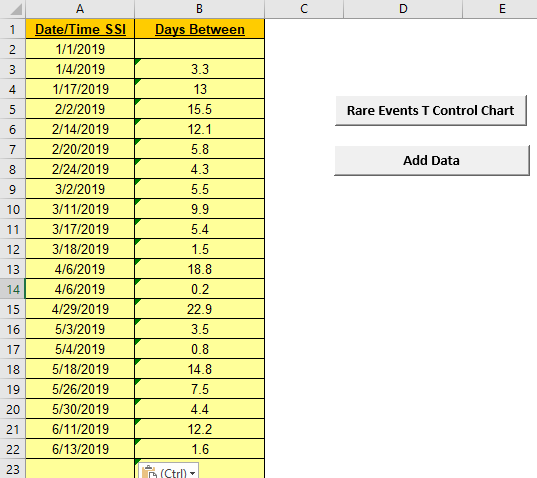
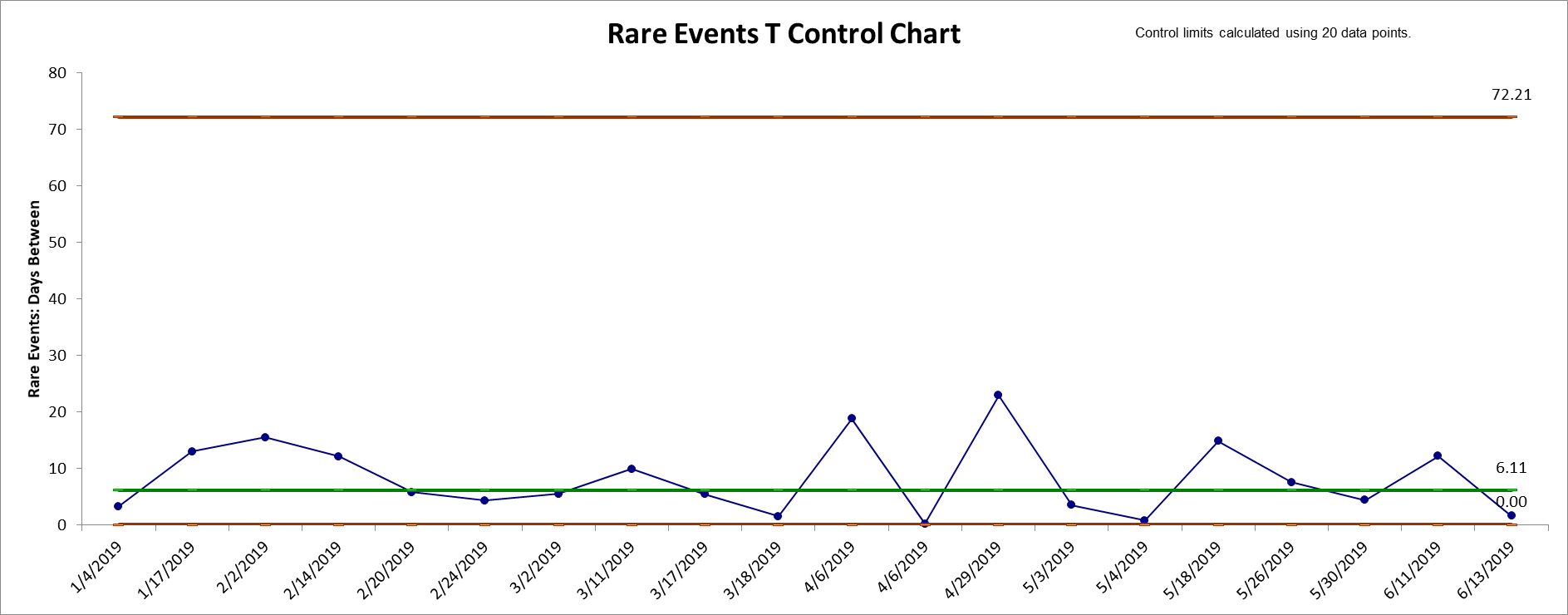
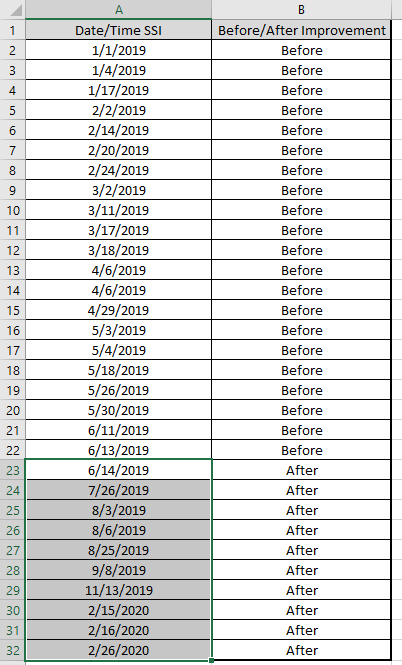
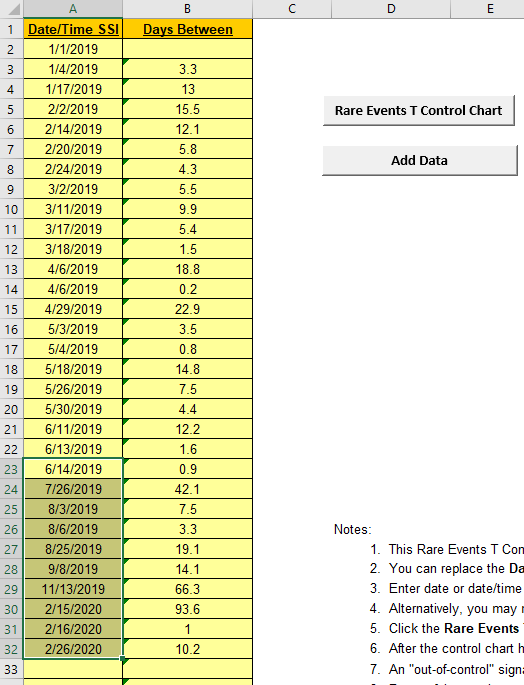
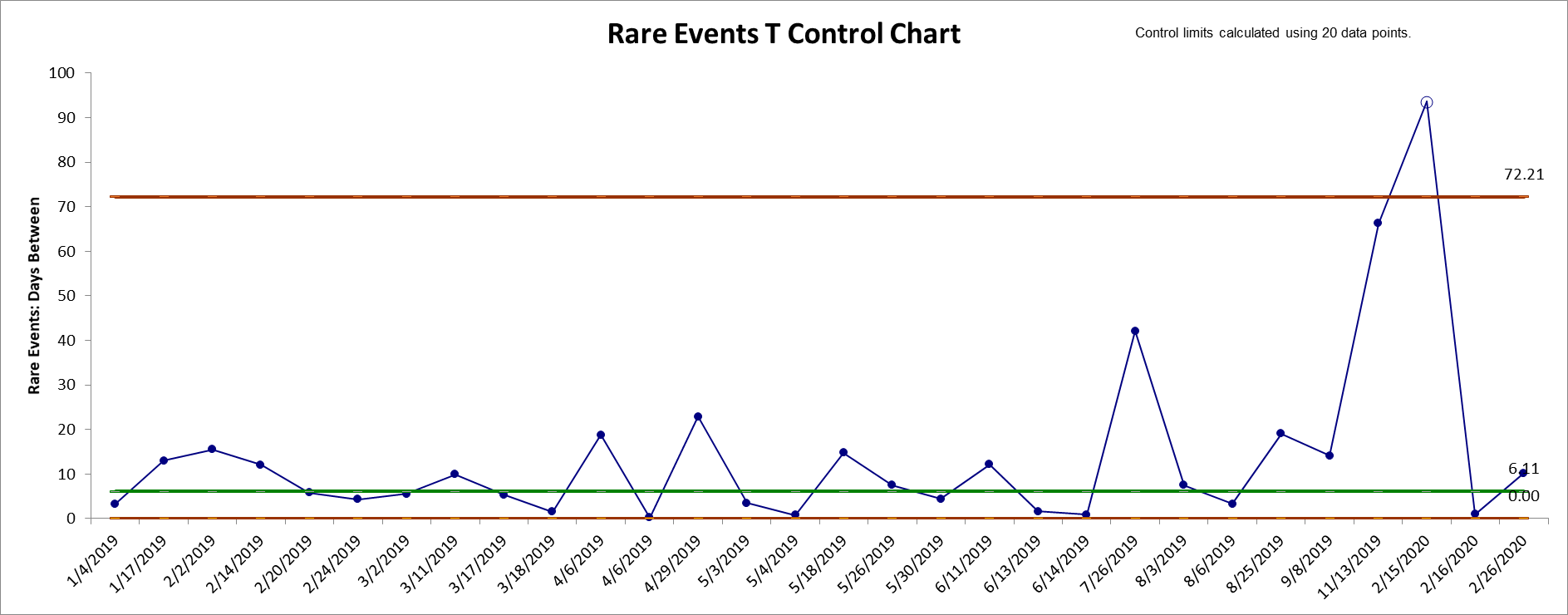
1. This Rare Events T Control Chart template should be used with
days or time between (typically adverse) rare events.
2. You can replace the Date/Time and Days Between column headings
with any headings that you wish.
3. Enter date or date/time in the Date/Time column. Days between are
automatically calculated and entered into Days Between column. Cell
B2 is not used in this case.
4. Alternatively, you may manually enter data in Days Between. Note,
this will overwrite the cell formula.
5. Click the Rare Events T Control Chart button to create a control
chart. This will overwrite any existing control chart.
6. After the control chart has been created and additional new
Date/Time or Days Between data entered, click the
Add Data button to
add the data to the existing chart.
7. An "out-of-control" signal above the UCL is desirable, indicating
a significant increase in time between adverse rare events.
8. Be careful to not have any zeros in the data.
9. This chart uses the control limit formulas given in Provost and
Murray, 2011.
10. The data are transformed with Y^(1/3.6), which transforms an
exponential distribution to a symmetric Weibull. See Nelson, 1994.
11. A Shewhart Individuals Chart is created on the transformed data
and the final control limits are then calculated as UCL^3.6, CL^3.6,
LCL^3.6.
12. Alternatively, a Rare Events T Chart may be created using a
Weibull or Exponential Control Chart. Click SigmaXL > Control Charts
> Nonnormal > Individuals Nonnormal. Select Specify Distribution,
Exponential (1 Parameter) or Weibull (2 Parameter).
13. References:
Nelson, L.S. (1994), “A Control Chart for Parts-Per-Million
Nonconforming Items”, Journal of Quality Technology, 26:3, pp.
239-240.
Provost L, Murray S. (2011), The Health Care Data Guide: Learning
from Data for Improvement. San Francisco: Jossey-Bass, pp. 230-231.
Our CTO and Co-Founder, John Noguera, regularly hosts free Web Demos featuring SigmaXL and DiscoverSim
Click here to view some now!
Phone: 1.888.SigmaXL (744.6295)
Support: Support@SigmaXL.com
Sales: Sales@SigmaXL.com
Information: Information@SigmaXL.com